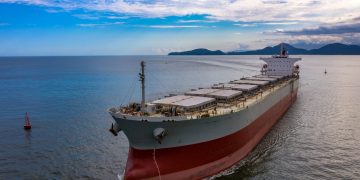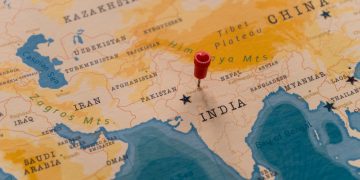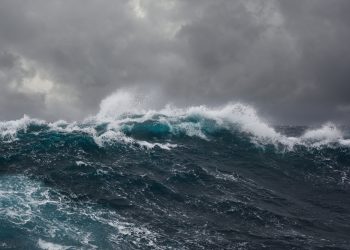Bad things happen for the same reasons that everything good happens and despite all best efforts, shipping cannot prevent every incident from occurring. This is where the role of insurance enters the game, but marine insurance, provided by P&I Clubs, is a complex topic, reflecting a complex industry.
From the aspect of protection against loss, the importance of marine insurance lies to the security provided to shipowners for potential claiming damages, ranging from occupational incidents onboard to piracy, from cargo damage to groundings, and many more. But how do P&I Clubs serve shipping?
What is a P&I?
Also known as Protection and Indemnity Club, a P&I Club is a non-governmental, non-for-profit mutual insurance association providing marine insurance to its members. These members include shipowners, operators, charterers, and seafarers under the member companies. Protection covers safe working of seafarers while indemnity covers any loss compensation. Under these ‘clubs’, like-minded shipowners pool their resources to insure their third-party risks, Mr. John Dolan from The Standard Club, has earlier explained to SAFETY4SEA.
While traditional marine insurance companies provide “hull and machinery” cover for shipowners and cargo cover for cargo owners, a P&I club provides cover for open-ended risks that traditional insurers are reluctant to insure. In addition, unlike a marine insurance company, which reports to its shareholders, a P&I club reports only to its members.
When does the P&I Club get involved?
The Club is involved in case of an accident onboard, either underway at sea or while at port, such as collision, grounding, property damage, pollution, environmental damage and removal of wrecks. A major aspect of P&I cover is also human life, so P&I compensation is provided in case of accident onboard leading to injury or death as well as illness. Of course, the Master is expected to notify the respective P&I Club also in case of any other perils, issues relating to immigration and crew matters, illegal anchoring etc. More specifically, P&I may cover:
- Illness, injury and death of crew, passengers and other third parties onboard
- Stowaways, deserters and refugees
- Collisions
- Damage to property (FFO)
- Pollution
- Wreck removal
- Cargo loss and damage
- Fines
- Costs incurred in criminal proceedings
- Sue and labour expenses
- General Average
- Salvage
A glance of history
Marine insurance has its roots in the 18th century, when the first clubs -then known as “Hull Clubs” were set up by shipowners with the goal to provide insurance cover for physical damage to ships of their members. This was based on the idea that the hull of a ship is among the most important factors for the safe operation of a ship and required some form of insurance. As club members, each shipowner would pay for a share of the total risk that was covered for all the ships owned by all the shipowner members.
At the time, the place where the shipping industry community regularly came together to discuss maritime insurance, shipbroking and foreign trade, was the Lloyd’s Coffee House in London. The dealings that took place at this coffee house led to the establishment of the insurance market Lloyd’s of London, Lloyd’s Register and several related shipping and insurance businesses. This is where the so-called “underwriters” gradually gained ground over the traditional hull clubs for being more responsible.
The gap in covering cargo claims and an increase in trade created a need for providing insurance cover for liability for cargo loss or damage, leading to the establishment of the first indemnity club in 1874. This “indemnity cover” began to be included to the underwriting risks, giving birth to the first the Protection and Indemnity (P&I) Clubs.
The International Group of P&I Clubs
With an observer status at the IMO, the London-based International Group of P&I Clubs is comprised by 13 global P&I Clubs that provide marine liability cover for approximately 90% of the world’s ocean-going tonnage. These are:
- The Swedish Club
- UK P&I Club
- Japan P&I Club
- Gard Club
- Britannia P&I Club
- The London P&I Club
- The American Club
- Shipowners Club
- North Club
- Steamship Mutual
- The Standard Club
- Skuld Club
- West of England Club
DO YOU KNOW?: Read in this series
How does this work?
Despite being independent and individually competitive, the Clubs share knowledge and expertise on matters relating to shipowners’ liabilities and the insurance and reinsurance of such liabilities. Through their participation in the IG Group, the member clubs share claims above an individual retention via a pooling structure that is underpinned by the collective annual purchasing of the highest levels of reinsurance cover from the world’s commercial reinsurance markets. This provides a “collective strength” to the Clubs allowing each of them to provide the insurance cover needed by the shipowners to enable their ships to trade and cover the compulsory insurance requirements of maritime transport worldwide. The keywords here are the “mutual advantage”.
As the Shipowners Club explains:
“The high limits of cover provided by the IG of P&I Clubs exist due to the unique risk sharing system behind mutual insurance policies in which the combined resources of the world’s major ship owners can be called upon to respond in times of greatest need through the overspill call.”
The following video explains their role in more detail:
































































































































